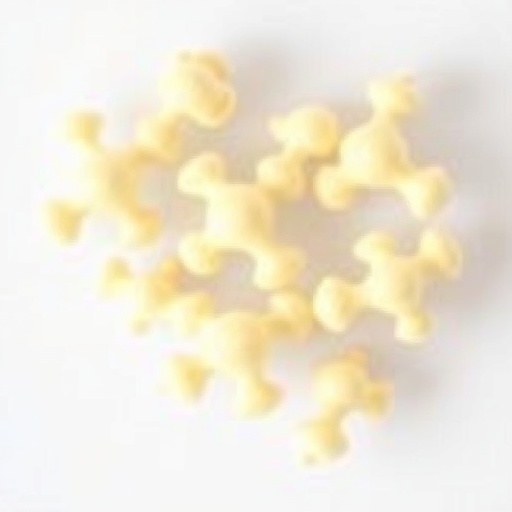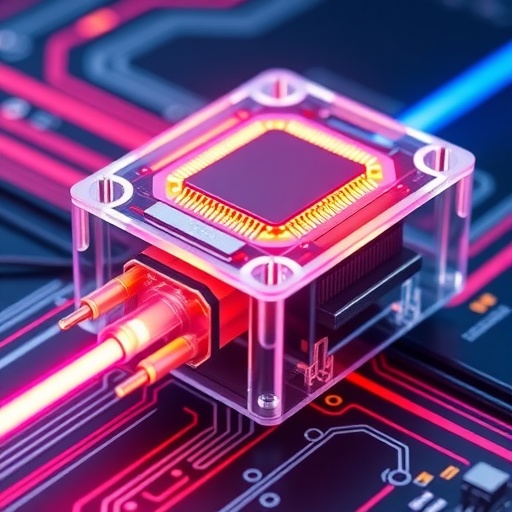In the rapidly evolving landscape of food science and microbiology, the quest for safe and effective probiotics remains at the forefront of research efforts worldwide. Recent investigations have zeroed in on the genus Pediococcus, particularly the species Pediococcus acidilactici, for its promising applications in both food preservation and human health enhancement. A groundbreaking study by Shin, Jeong, Lee, and colleagues published in 2025 sheds new light on the safety profile and probiotic potential of two specific strains, Pediococcus acidilactici SY21 and SY22. This comprehensive safety assessment marks a significant milestone that could influence the future integration of these strains into functional foods and therapeutic formulations.
Probiotic bacteria such as lactic acid bacteria have long been celebrated for their ability to improve gut microbiota balance, enhance immune responses, and inhibit pathogenic microorganisms. However, ensuring the safety of candidate strains is paramount before they can be widely recommended for consumption or industrial use. The study in question meticulously evaluated the safety characteristics of P. acidilactici SY21 and SY22 through an array of in vitro and in vivo analyses, providing robust evidence to support their potential as safe probiotic agents.
One of the principal focuses of the research was to examine hemolytic activity, a critical factor when assessing any microbial strain’s safety. Hemolysis, the destruction of red blood cells, can be a marker of pathogenic potential. The absence of hemolytic activity in both SY21 and SY22 reassures that these strains do not possess harmful cytotoxic traits, thereby aligning with safety standards required for probiotics intended for human consumption.
.adsslot_NjLp1tMCec{ width:728px !important; height:90px !important; }
@media (max-width:1199px) { .adsslot_NjLp1tMCec{ width:468px !important; height:60px !important; } }
@media (max-width:767px) { .adsslot_NjLp1tMCec{ width:320px !important; height:50px !important; } }
ADVERTISEMENT
Another pivotal aspect addressed by the researchers was the antibiotic susceptibility profile of the two P. acidilactici strains. Given the global concerns regarding antimicrobial resistance transmission, the ability of probiotic strains to resist antibiotics could pose risks if these traits are transferable. The study revealed that both SY21 and SY22 exhibited susceptibility to a broad spectrum of clinically relevant antibiotics, suggesting a low likelihood of horizontal gene transfer related to resistance. This finding significantly enhances the safety credibility of these strains.
The research also delved into potential virulence factors, which are genetic elements that might contribute to pathogenicity. Comprehensive genomic analyses and phenotypic assays demonstrated that neither SY21 nor SY22 possessed known virulence genes, further supporting their benign nature. This absence of deleterious determinants is a crucial determinant for approval by regulatory bodies, reinforcing the candidacy of these strains as probiotics.
Evaluating the metabolic activities of these bacteria, the study investigated lactic acid production and enzymatic profiles pivotal to maintaining gut homeostasis. Both strains showed efficient lactic acid production, which is associated with lowering gut pH and suppressing harmful bacteria. Their enzymatic activity, contributing to nutrient breakdown and bioactive compound synthesis, indicates additional benefits beyond basic fermentation, potentially enhancing host digestive processes.
Adherence to intestinal epithelial cells is another probiotic criterion the authors explored. The ability of SY21 and SY22 to adhere to mucosal surfaces suggests probiotic persistence within the gastrointestinal tract, which is essential for exerting sustained health benefits. In vitro adhesion assays confirmed that both strains could attach effectively to human intestinal cell lines, hinting at strong colonization potential in vivo.
Beyond individual safety and functionality, the interplay of these strains with immune modulation was implicitly touched upon. Pediococcus species have been documented to modulate cytokine production and strengthen mucosal immunity. While the study primarily focused on safety, preliminary results implied that SY21 and SY22 could contribute positively to immunological responses without triggering inflammation, a balance critical for probiotic efficacy.
Moreover, the researchers investigated tolerance to gastrointestinal stress conditions, such as low pH and bile salts, simulating the transit through the human digestive system. The resilience of SY21 and SY22 under harsh simulated gastric and intestinal environments underscores their capability to survive and reach the lower gut intact, a necessary prerequisite for any effective probiotic.
The implications of this study extend into food safety as well, highlighting the potential role of SY21 and SY22 in fermentation processes. Their antimicrobial activity against common foodborne pathogens complements their probiotic attributes, suggesting dual utility in prolonging shelf-life and promoting gut health. This multidimensional performance enhances their appeal within the functional food sector.
Ethical and regulatory considerations are critical in the path from laboratory research to market introduction. The rigorous safety evaluations conducted by Shin and colleagues align with international guidelines set by organizations such as the FAO/WHO and EFSA. Their thorough approach ensures that these strains could meet the stringent demands for approval as food-grade probiotics, paving the way for clinical trials and commercial applications.
The study’s findings also encourage further exploration of Pediococcus acidilactici as a species rich in beneficial traits. While many probiotic formulations predominantly include Lactobacillus and Bifidobacterium, the inclusion of Pediococcus strains could diversify and enhance probiotic product lines, tailored to different health objectives, from gut health to metabolic disorders.
The future of probiotics is bright, with research such as this illuminating the path towards safer, more effective microbial supplements. The distinct safety profile combined with functional properties of Pediococcus acidilactici SY21 and SY22 underscore a pivotal shift in probiotic development strategies. As consumer demand for natural and scientifically validated health interventions grows, these strains offer promising alternatives rooted in meticulous scientific validation.
In summary, this study by Shin et al. meticulously exemplifies the journey from microbial isolation to safety assurance and functional validation of probiotic candidates. The focus on Pediococcus acidilactici SY21 and SY22 highlights the exciting potential of lesser-known lactic acid bacteria in contributing to human health. Through rigorous testing and multifaceted analysis, the research expands the probiotic horizon, challenging industry norms and setting new benchmarks for microbial safety and efficacy. The emerging evidence strongly suggests these strains could soon be integral components of next-generation probiotics, with broad implications for nutrition, medicine, and food technology.
Subject of Research:
Safety assessment and probiotic potential evaluation of Pediococcus acidilactici strains SY21 and SY22.
Article Title:
Safety assessment of potential probiotic lactic acid bacteria strains Pediococcus acidilactici SY21 and Pediococcus acidilactici SY22.
Article References:
Shin, J., Jeong, H., Lee, NK. et al. Safety assessment of potential probiotic lactic acid bacteria strains Pediococcus acidilactici SY21 and Pediococcus acidilactici SY22. Food Sci Biotechnol (2025). https://doi.org/10.1007/s10068-025-01925-9
Image Credits:
AI Generated
DOI:
https://doi.org/10.1007/s10068-025-01925-9
Tags: food preservation with probioticsfunctional foods developmentgut microbiota balancehealth benefits of probioticshemolytic activity in probioticsimmune response enhancement probioticsin vitro and in vivo analyseslactic acid bacteria applicationsmicrobial safety assessmentsPediococcus acidilactici safety evaluationprobiotic bacteria in food sciencetherapeutic formulations with probiotics






